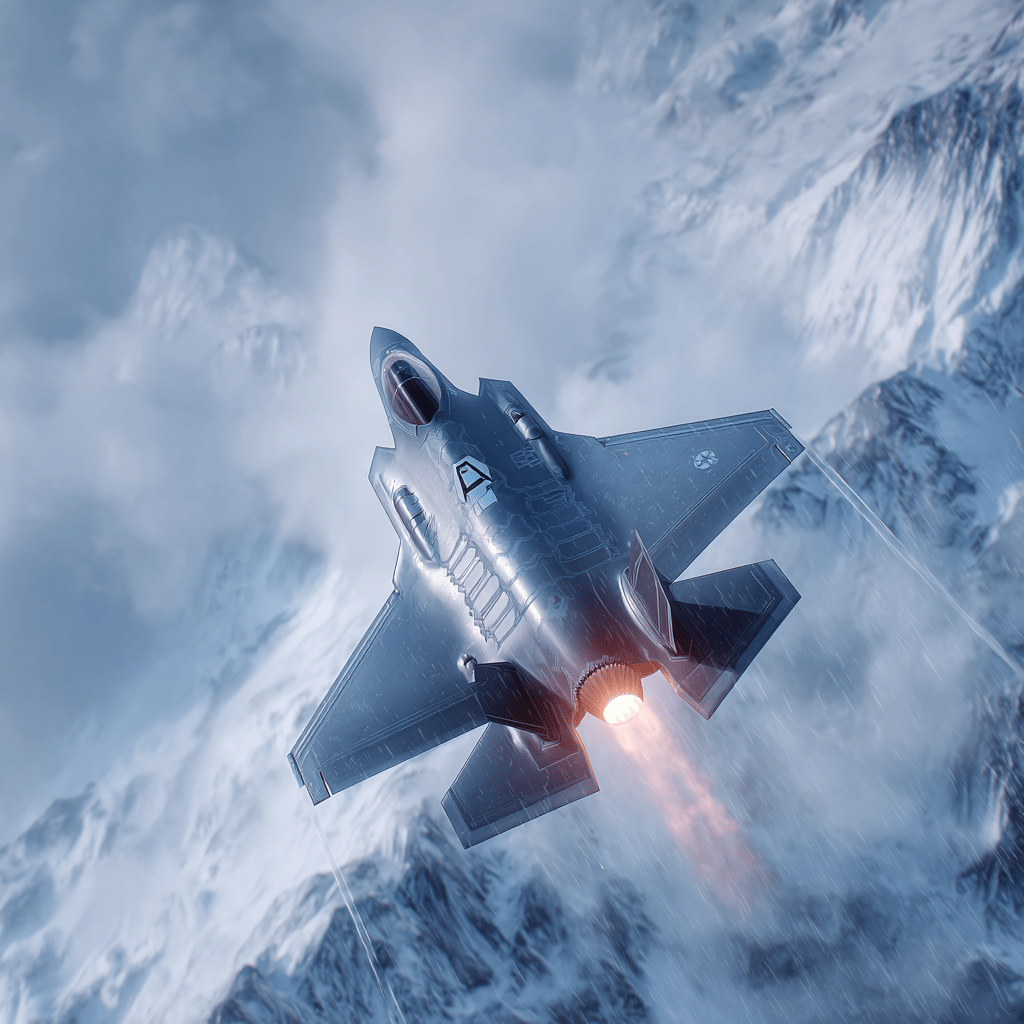An extensive inquiry conducted by the U.S. Air Force has determined that the catastrophic loss of an F-35 fighter jet earlier this year was ultimately due to something deceptively simple: the buildup of ice within the aircraft’s landing gear system. This seemingly minor accumulation of frozen water had profound consequences, as it misled the jet’s automated sensors into concluding that the aircraft had already landed while it was still airborne. Such an erroneous signal caused the plane’s flight-control logic to transition into a mode designed only for ground operations, thereby rendering the aircraft effectively uncontrollable and precipitating a dramatic crash in Alaska.
The mishap unfolded at Eielson Air Force Base in January, where footage captured the jet losing stable flight and spiraling downward before colliding with the terrain in a fiery explosion. According to a detailed report recently released by the Air Force Aircraft Accident Investigation Board, the malfunction originated with frozen hydraulic fluid within the nose landing gear assembly. This ice obstructed the normal function of the gear struts, preventing one side from fully retracting and causing the aircraft to tilt. That tilt compromised essential flight controls and eventually triggered a cascade of system failures from which the aircraft could not recover once the flight computer was misled into ground-mode operations.
Investigators traced the root of the problem back to a maintenance oversight. The squadron responsible for servicing the aircraft, the 355th Fighter Generation Squadron, had not adhered to established protocols for handling hydraulic fluid barrels. Contamination by water compromised one of these barrels, and hydraulic servicing of the mishap aircraft drew directly from it. Once the jet departed into the frigid Alaskan atmosphere, the entrapped water froze, paralyzing key landing gear mechanisms and initiating the chain of malfunctions that caused the accident.
Despite the dire circumstances, the pilot acted decisively and in accordance with prescribed emergency protocols. After immediately running through the initial in-flight emergency checklists, the aviator established communication with both Lockheed Martin engineers—the aircraft’s manufacturer—and the on-duty flying supervisor. Together, they attempted to identify a recovery strategy. For nearly fifty minutes, the pilot remained airborne while a solution was sought via this collective teleconference. As part of these attempts, the flier performed two touch-and-go maneuvers, each intended to jar the trapped nose gear back into proper alignment. Neither attempt succeeded, as the ice had immobilized the system fully.
The investigation report clarified that ice initially obstructed the right strut’s ability to extend, followed by similar impairment of the left strut after takeoff. After the second attempted touch-and-go landing, the F-35’s onboard sensors falsely registered a ‘weight on wheels’ condition. This misreading effectively informed the jet that it was grounded, even though it was still at altitude, and consequently forced the flight-control software into a ground-only operation mode. Once that happened, the fighter jet spiraled out of the pilot’s control. The aviator, recognizing the impossibility of recovering the aircraft, ejected successfully. Emergency teams arrived within a minute to ensure his safety. Though he sustained only minor injuries, the advanced fighter, valued at over $196 million, was irreparably destroyed.
Interestingly, after the ejection, the F-35 briefly resumed an ascent trajectory, climbing to more than 2,600 feet before stalling without pilot input; shortly thereafter, gravity carried it back down to the ground, where it was consumed by flames. Ultimately, the investigative board concluded that the frozen contamination—hydraulic fluid tainted with water—was the direct precipitating cause. Yet, they also highlighted other influential elements that deepened the crisis. These included shortcomings in maintenance discipline, inadequate oversight of hazardous material handling, and the collective decision-making of those participating in the in-flight consultation. Specifically, the board noted that the experts involved could have more carefully considered Lockheed Martin’s recent technical guidance, which explicitly warned that sensor malfunctions affecting ‘weight on wheels’ systems can produce severe controllability issues. Had those warnings been factored into their risk assessment, the recommended course of action might have been to execute a controlled ejection or a full-stop landing attempt earlier, rather than pursuing repeated touch-and-go trials.
Documentation gaps compounded the difficulty of reconstructing how contamination occurred. The handling procedures for hazardous materials, particularly hydraulic fluids, may not have been scrupulously followed, and the board determined that the barrel from which this aircraft was serviced contained significant quantities of water. However, because records were incomplete, the precise moment when the water infiltrated the system could not be ascertained.
This tragic episode represents only one of several mishaps involving the fifth-generation F-35 multirole fighter, which is currently operated by 19 different countries and has been central to modern Western airpower strategy. Since 2018, the aircraft family has experienced approximately a dozen significant crashes, the most recent of which occurred during the summer in California. Statistically, the F-35’s accident rate remains relatively low in comparison to earlier generations of fighter aircraft, but the platform’s extraordinary cost—both in development and procurement—has ensured that each incident attracts heightened scrutiny. Critics of the program frequently cite the jet’s persistent technological challenges, cost escalations, and developmental delays as evidence of structural flaws within the program. These concerns are exacerbated by debates about whether investments in manned fighters are prudent at a time when some military analysts advocate for a shift toward unmanned aerial systems.
Nevertheless, despite these controversies and setbacks, the F-35 remains a cornerstone of U.S. and allied military aviation. Its blend of stealth, advanced sensors, and high-performance capabilities continues to underpin strategic doctrine, even as this recent accident serves as a sobering reminder that even the most sophisticated machines are vulnerable to basic natural forces, and that the integrity of their performance depends heavily on rigorous human oversight and flawless maintenance practices.
Sourse: https://www.businessinsider.com/alaska-f-35-crash-ice-system-think-on-ground-investigation-2025-8


